X-ray densitometry
Advantages of densitometry in EMC
The EMC has a densitometer that has proven itself worldwide as a reliable and accurate device, as well as the latest software that can be used to conduct the full range of research related to bone densitometry in Moscow.
Decoding of the examination by a radiologist is usually carried out during the day.
EMC features:
- Assessment of mineral density in various anatomical areas (spine, hip, whole body and forearm).
- Assessment of the 10-year fracture risk based on the WHO-approved FRAX calculator model.
- A standard bone density report based on the readings of the densitometer and the doctor's opinion based on the demographic indicators of the patient.
- The GE Lunar DXA bone densitometer in our clinic has a number of devices, such as fastening clamps, trapezoids, foam cubes, to create the most optimal scanning conditions and patient convenience.
Registration for densitometry at the EMC is carried out through the assistants of the Department of radiation diagnostics. The cost of densitometry.
What is X-ray densitometry
?
Densitometry is a non-invasive method for determining bone mineral density (BMD).
The research is conducted in order to:
- Identification of a pathological decrease in bone mineral density and the degree of bone mass reduction.
- Evaluation of structural changes in bone tissue.
- Evaluation of bone strength characteristics.
- Determining the risk of fractures (using a special program, the FRAX calculator).
- Evaluation of the consistency and uniformity of bone mineral density reduction.
- Identification of conditions preceding osteoporosis.
- Determination of the dynamics of pathological changes and the effect of treatment.
- Diagnosis of osteoporosis. Densitometry of the lumbar spine and femoral neck is most often performed, as fractures of the above-described sections dramatically reduce the quality of life and cause long-term limitation of the patient's mobility. In addition, the bone mineral density of the forearm is often assessed.
Types of X-ray densitometry
- quantitative ultrasound (KUDM),
- Dual-energy X-ray absorptiometry (DRA or DXA)
- quantitative computed tomography (CT).
- Worldwide and in Russia, dual-energy X-ray absorptiometry or X-ray osteodensitometry is considered the gold standard.
Indications and contraindications for densitometry
The main indication for densitometry is the diagnosis of osteoporosis before the onset of its symptoms.
General indications:
- establishment or confirmation of the diagnosis of osteoporosis, according to WHO recommendations;
- forecasting the risk of fractures depending on the degree of decrease in BMD;
- monitoring the dynamics of patients' condition during therapy or without treatment.
At risk of decreased bone mineralization:
- Women over the age of 40 (risk of postmenopausal osteoporosis) and men over the age of 60 (risk of postandropausal osteoporosis).
- Women who have had multiple births, as well as breast-feeding for a long time (more than 9 months).
- Early menopause before the age of 45 (including surgery).
- Patients with various forms of calcium-phosphorus metabolism disorders.
- Patients with endocrine system disorders (Itsenko-Cushing's disease and syndrome, thyrotoxicosis, hypogonadism, hyperparathyroidism, insulin-dependent diabetes mellitus, hypopituitarism).
- Patients with low-energy fractures (under the influence of a force that cannot cause a fracture of a healthy bone) with minimal injuries, especially if less than 5 years have passed since the previous fracture.
- Patients with rheumatic diseases (rheumatoid arthritis, SLE, ankylosing spondylitis).
- Patients with diseases of the digestive system (condition after gastric resection, malabsorption syndrome, chronic liver diseases).
- Patients with kidney diseases (chronic renal failure, renal tubular acidosis).
- Patients with blood diseases (myeloma, thalassemia, systemic mastocytosis, leukemia and lymphoma).
- Patients with genetic disorders (osteogenesis imperfecta, Marfan syndrome, Ehlers-Danlos syndrome, homocystinuria, lysinuria).
- Patients taking drugs that reduce bone density (corticosteroids, hormonal contraceptives, anticonvulsants, immunosuppressants, gonadotropin-releasing hormone agonists, antacids containing aluminum, thyroid hormones).
Patients with risk factors for osteoporosis such as:
- tendency to fall (for various reasons);
- physical inactivity (including bed rest for more than two months, use of a wheelchair and other auxiliary means of transportation, immobilization);
- organ transplantation;
- anorexia nervosa;
- chronic obstructive pulmonary diseases;
- unbalanced diet (insufficient content of calcium and vitamin D in food, consumption of large amounts of caffeinated drinks), observance of various fasting diets, therapeutic fasting, etc.;
- smoking and alcohol abuse.
For such patients, we recommend that they undergo an initial consultation with a specialist followed by referral for densitometry.
Contraindications
X-ray densitometry has no absolute contraindications.
Relative values can be called:
- pregnancy and lactation,
- the presence of metal implants and metal structures in the study area,
- recent injuries and other conditions that make it impossible to remain motionless during the study,
- contrast studies (intravenous contrast studies, passage of barium contrast through the gastrointestinal tract, X-ray of the esophagus, stomach and duodenum using contrast agents, irrigoscopy/irrigography) or with the introduction of radiopharmaceuticals conducted 72 hours before the expected densitometry and earlier.
Preparation and carrying out of densitometry
A few days before the study, you should limit the use of foods with a high calcium content (for example, dairy products), and refrain from taking calcium supplements.
How is densitometry performed
A few days before the study, you should limit the use of foods with a high calcium content (for example, dairy products), and refrain from taking calcium supplements.
The EMC uses a dual-energy densitometer from General Electric with advanced software from the end of 2017. The device is equipped with sensors that determine the intensity of X-ray radiation passing through the body, depending on the density of soft and bone tissues.
X-ray bone densitometry is performed quickly and painlessly. The duration of the study is usually from 10 minutes to half an hour.
The patient is asked to take off metal objects and accessories located in the study area, strip down to his underwear and put on a bathrobe. After that, the patient lies down on the densitometer table. The medical staff helps the patient to take the most appropriate position, depending on the type of study. A detector is located above the patient, which measures the permeability of the rays. The detector moves along the patient's body during the examination. The patient must remain motionless to eliminate artifacts caused by the patient's movement during the scan.
What does densitometry show and how is the result interpreted
As a result of the study, bone mineral density is determined, then the indicators are interpreted by a radiologist, and a conclusion is formed.
Bone density and the presence of osteoporosis are determined based on two criteria. These criteria are called the T-criterion and the Z-criterion. The algorithm for decoding using these criteria has been established and recommended by the Russian Osteoporosis Association and the World Health Organization. The criteria compare the condition and bone density of patients with an ideal indicator (young people aged 30-35 years of the corresponding gender). The T-test is used for women after menopause and for men after the age of 50. The norm for the indicator is a value of 1 point (or one standard deviation). If the value varies from -1 to -2.5, then "osteopenia" is diagnosed — this is a reduced density of bone tissue, a condition preceding osteoporosis. If the indicator falls below -2.5, then the diagnosis is osteoporosis.
Get help
Specify your contacts and we will contact you to clarify the details.
Doctors
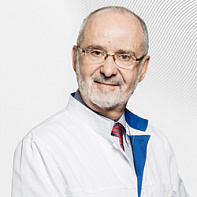
Evgeniy Libson (Israel)
Deputy Director of the Institute of Oncology, Chief Consultant on Cancer Diagnostics, Professor of Radiology. Chief Specialist in Cancer Diagnostics and CT-guided Biopsies, FRCR, FRCR
-
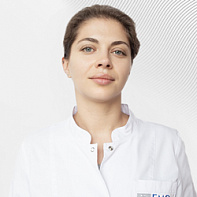
anastasiya kovalenko
-
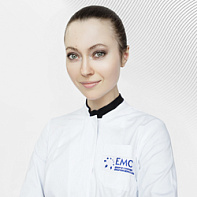
Veronika Saraeva
-
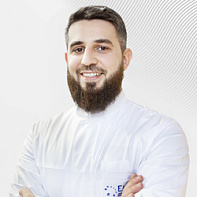
Ela Amkhadov
-

Ekaterina Chukanova
-

Nikita Elagin
-
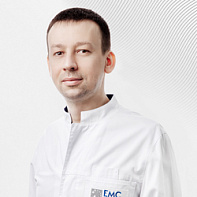
Aleksandr Chekeridi
-

Kristina Kostina
-
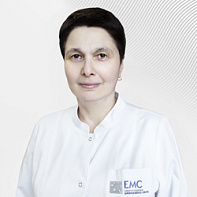
Nino Chelidze
-
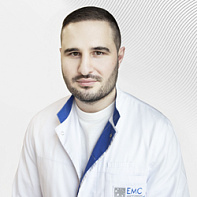
Zurab Baramashvili
-

Irina Lisenkova
-

Oleg Gorodilov
-
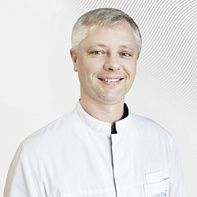
Dmitriy Orlov
-
.jpg)
Danilov Dmirty
Ph.D. of Medical Sciences
-
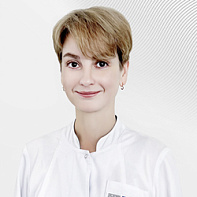
Zhusheva Hatalya
-
.jpg)
Kirsanov Vadim
-

Matrosova Mariya
Ph.D. of Medical Sciences
-
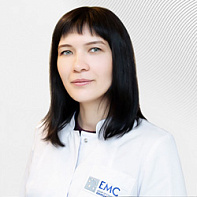
Dugova Mariya
-
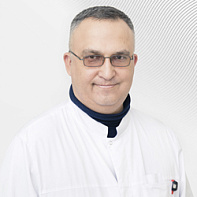
Kurilovich Konstantin
-
.jpg)
Streltsova Olga
Ph.D. of Medical Sciences
-
Evgeniy Libson (Israel)
Deputy Director of the Institute of Oncology, Chief Consultant on Cancer Diagnostics, Professor of Radiology. Chief Specialist in Cancer Diagnostics and CT-guided Biopsies, FRCR, FRCR
- Actively participates in the work of scientific and research institutions
- He currently holds the position of Professor of Radiology at Hadassah Hospital. Member of the Education Committee of Hebrew University – Hadassah School of Medicine
- Awarded for outstanding contribution to Israeli Healthcare - Israeli Medical Association
Total experience
53 years
Experience in EMC
since 2011




